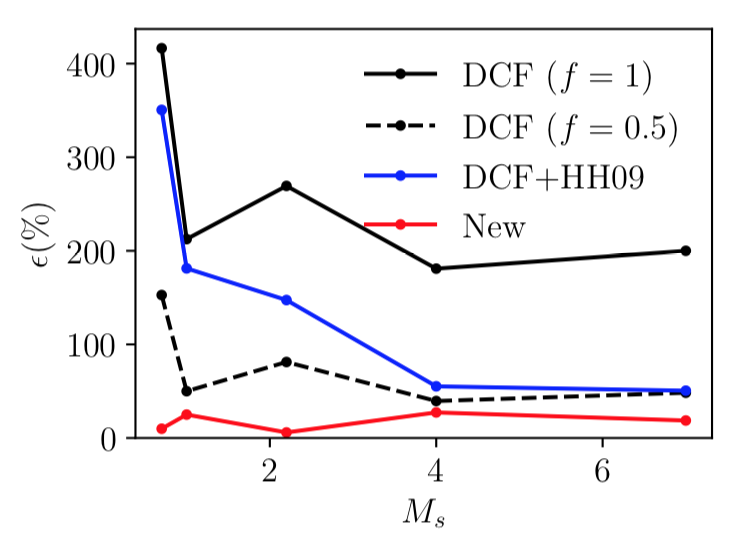A new method to infer the magnetic field of the interstellar medium achieves unprecedented accuracy
A large-scale magnetic field (ranging from a fraction of a μG to hundreds of mG) permeates the interstellar medium (ISM) of our Galaxy and is involved in a variety of astrophysical properties (e.g. star formation, cosmic ray propagation). Characterizing the magnetic field properties is necessary in order to understand these processes.
Dust polarization has been proven one of the most powerful observables for studying the field properties in the ISM, although it probes only the magnetic field orientation and not its strength. For this reason, various methods which infer the magnetic field strength have been developed. The most widely applied method has been developed by Davis (1951) and Chandrasekhar & Fermi (1953) (DCF). This method relies on the assumption that the observed spread in the distribution of polarization angles is due to the propagation of the so-called Alfvén magnetohydrodynamic waves. Observations, however, indicate that non-Alfvénic (compressible) modes may be important in the ISM dynamics.

Rafael Skalidis, a PhD student at the Institute of Astrophysics and his supervisor Prof. Kostantinos Tassis propose a new method for estimating the magnetic field strength which includes the compressible modes. They have tested their method in MHD numerical simulations and compared it with the classical DCF method.
In the figure to the right it is shown with the black solid line (f=1) the relative deviation of the DCF estimated magnetic field strength from the true value in five different MHD simulation models. The black dotted line shows the DCF estimates corrected for line of sight and turbulent effects (f=0.5). Τhe blue line corresponds to DCF combined with the method of Hildebrand et al. 2009 and Houde et al. 2009, which corrects for line of sight and instrumental effects. The red line corresponds to the relative deviation of the true magnetic field strength and the value obtained with our method. The proposed method outperforms the previous methods, which are based solely on Alfvénic modes, and achieves a mean relative deviation of 17% without the need for a correction.
Article:“High-accuracy estimation of magnetic field strength in the interstellar medium from dust polarization”, R. Skalidis, K. Tassis, 2021, A&A, 647, 186 – March 2021 - A follow up study by R. Skalidis, et al. 2021, A&A, 656, A118 was highlighted by A&A.
